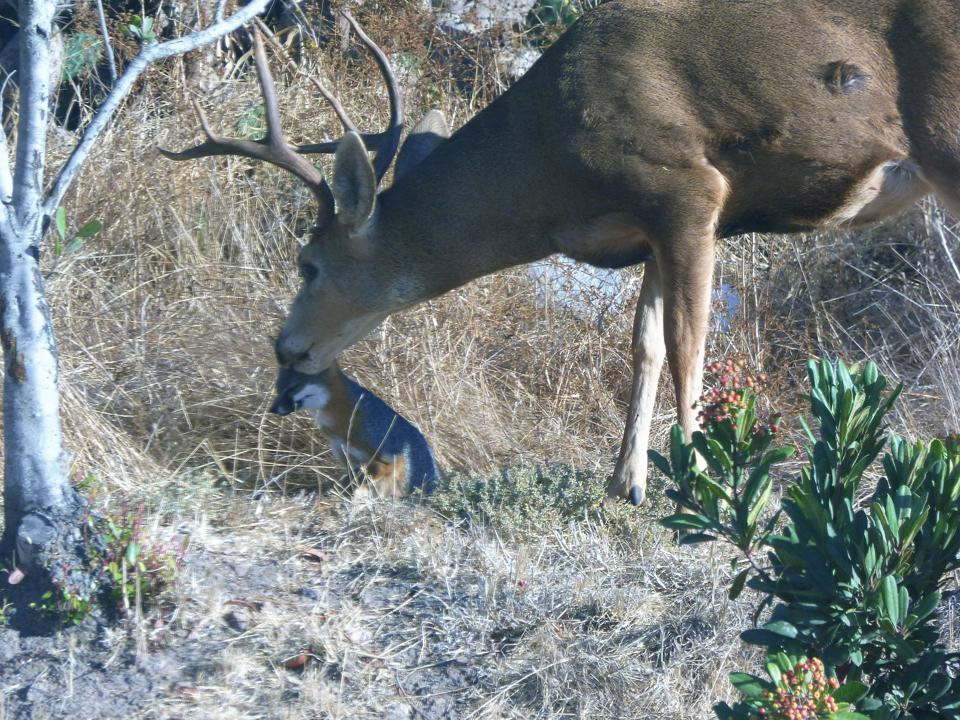The Channel Island Fox, a small, carnivorous mammal endemic to the Channel Islands off the coast of California, has faced numerous threats to its survival over the years. With six subspecies spread across the islands, each has uniquely adapted to its environment, making conservation efforts both challenging and crucial. Historically, the foxes thrived on the islands, playing a vital role in maintaining the ecological balance. However, with the introduction of non-native species, habitat destruction, and other human activities, their populations drastically declined, prompting urgent conservation measures.
Historical Perspective: Understanding the Decline
To comprehend the current state of conservation efforts, it’s essential to delve into the historical context of the Channel Island Fox’s decline. Initially, the introduction of non-native species such as dogs, cats, and golden eagles, which were attracted by the presence of human-introduced prey, posed a significant threat. These predators hunted the foxes, leading to a sharp decline in their numbers. Furthermore, human activities such as farming, urbanization, and the introduction of invasive species led to habitat destruction and fragmentation, further endangering the foxes.
Conservation Initiatives: A Multifaceted Approach
Conservation efforts for the Channel Island Fox have been multifaceted, involving various stakeholders, including governmental agencies, non-profit organizations, and local communities. One of the primary strategies has been the removal of non-native predators. For instance, a concerted effort to eradicate golden eagles from the islands, coupled with the reintroduction of bald eagles (which do not prey on foxes), has helped in stabilizing fox populations. Additionally, captive breeding programs have been established to increase population sizes and genetic diversity among the foxes.
Habitat Preservation and Restoration
Habitat preservation and restoration are critical components of the conservation efforts. This involves protecting existing habitats from further destruction and restoring degraded habitats to make them suitable for the foxes again. The National Park Service, along with other organizations, has been instrumental in this endeavor, working to remove invasive species, reintroduce native plants, and manage the islands’ ecosystems in a way that benefits the foxes and other native species.
Community Engagement and Education
Community engagement and education are also vital in the conservation of the Channel Island Fox. Local communities, including residents and visitors, are educated about the importance of conserving the foxes and their habitats. This includes awareness campaigns about the threats posed by non-native species, the importance of protecting habitats, and the role each individual can play in conservation efforts. By engaging the community, there is a greater sense of ownership and responsibility towards the conservation of the foxes.
Future Trends and Projections
Looking to the future, the conservation of the Channel Island Fox is likely to involve more sophisticated and technology-driven approaches. For instance, the use of genetic analysis to monitor and manage fox populations more effectively, and employing advanced surveillance techniques to detect and deter predators. Additionally, there will be a greater emphasis on climate change mitigation and adaptation strategies, as changing environmental conditions pose new challenges to the survival of the foxes.
Conclusion
The conservation of the Channel Island Fox is a complex and ongoing process, requiring the collaboration of various stakeholders and the deployment of a range of strategies. From the historical context of decline to the current multifaceted conservation efforts, it is clear that saving this unique species is a priority. As we look towards the future, incorporating new technologies and addressing emerging challenges such as climate change will be crucial. The story of the Channel Island Fox serves as a powerful reminder of the impact of human activity on wildlife and the importance of concerted conservation efforts to protect endangered species.
What are the main threats to the Channel Island Fox?
+The main threats to the Channel Island Fox include predation by non-native species such as golden eagles, habitat destruction and fragmentation due to human activities, and the introduction of invasive species. Climate change also poses a emerging threat by altering the foxes’ food supply and habitat quality.
How can individuals contribute to the conservation of the Channel Island Fox?
+Individuals can contribute to the conservation of the Channel Island Fox by supporting organizations involved in fox conservation, spreading awareness about the importance of protecting the foxes and their habitats, and making environmentally conscious choices to reduce their impact on the ecosystem. Visiting the Channel Islands and participating in guided tours can also support conservation efforts financially and by promoting the value of these unique ecosystems.
What role do captive breeding programs play in the conservation of the Channel Island Fox?
+Captive breeding programs are crucial for increasing the population size of the Channel Island Fox and enhancing genetic diversity. These programs help in breeding foxes in a controlled environment, which are then released into the wild to bolster existing populations. This approach has been particularly successful in recovering populations that were on the brink of extinction.


